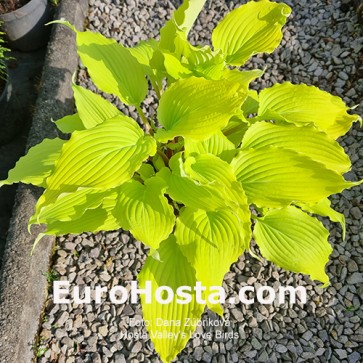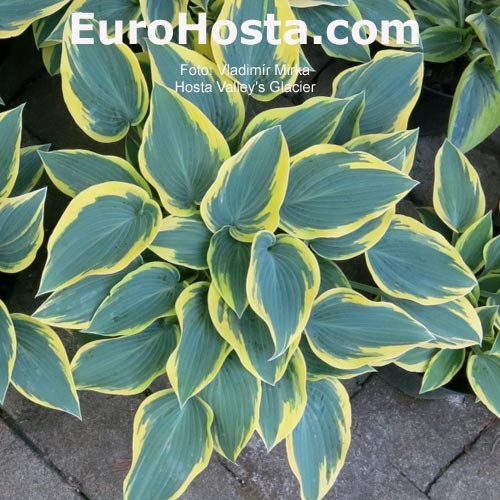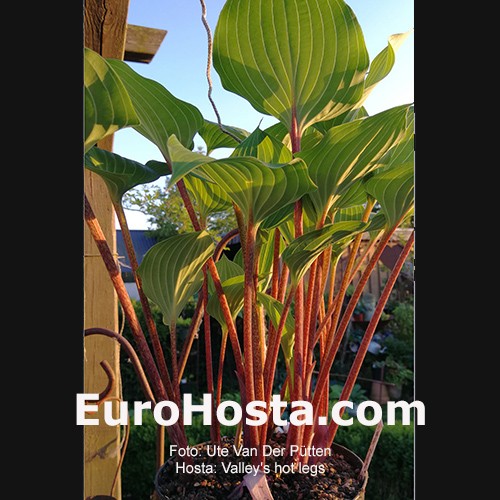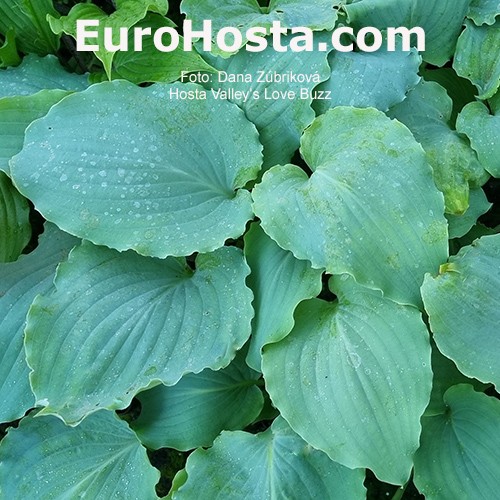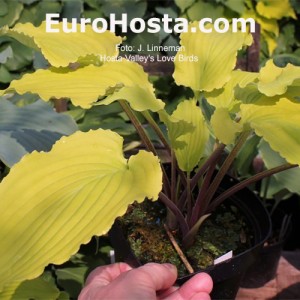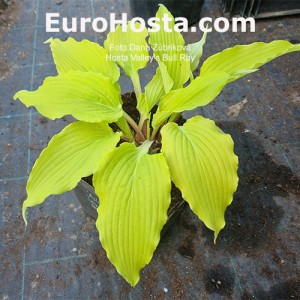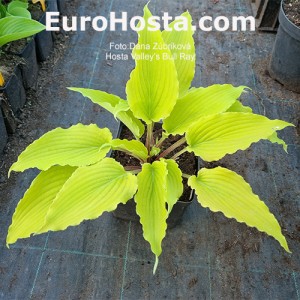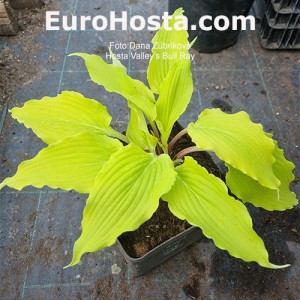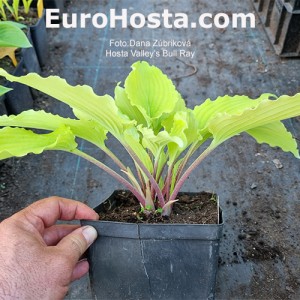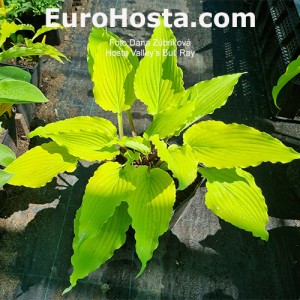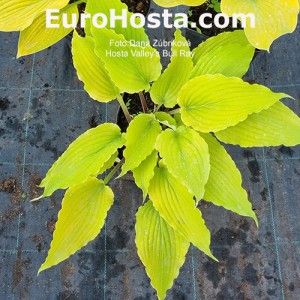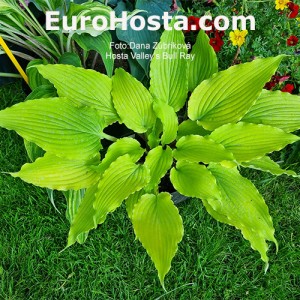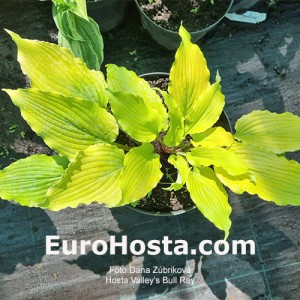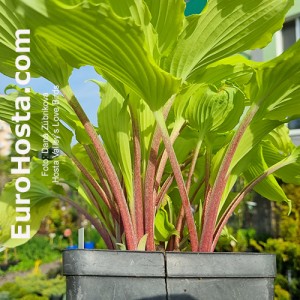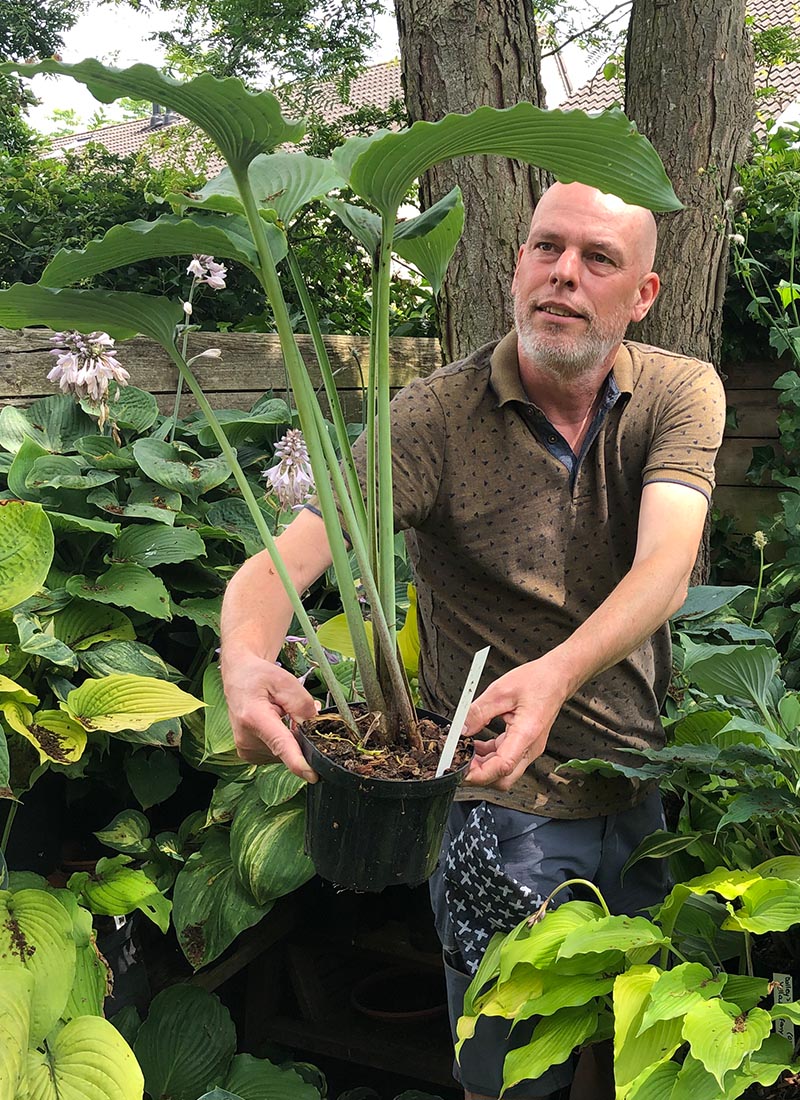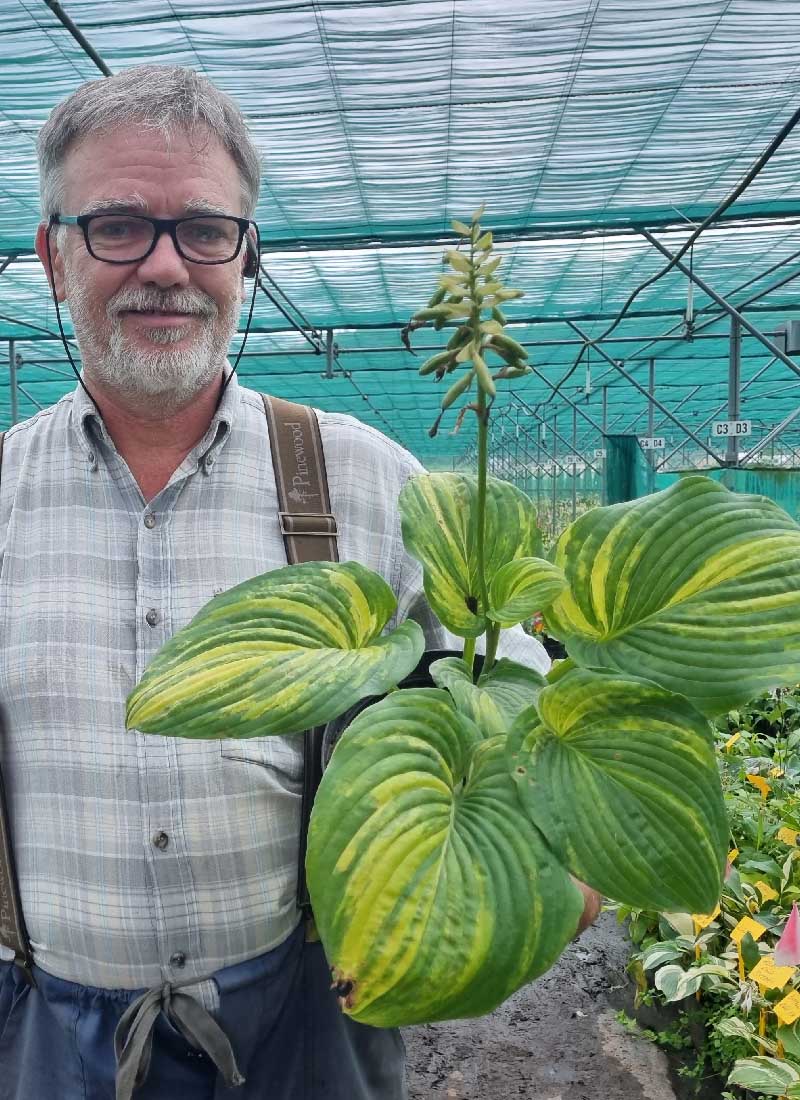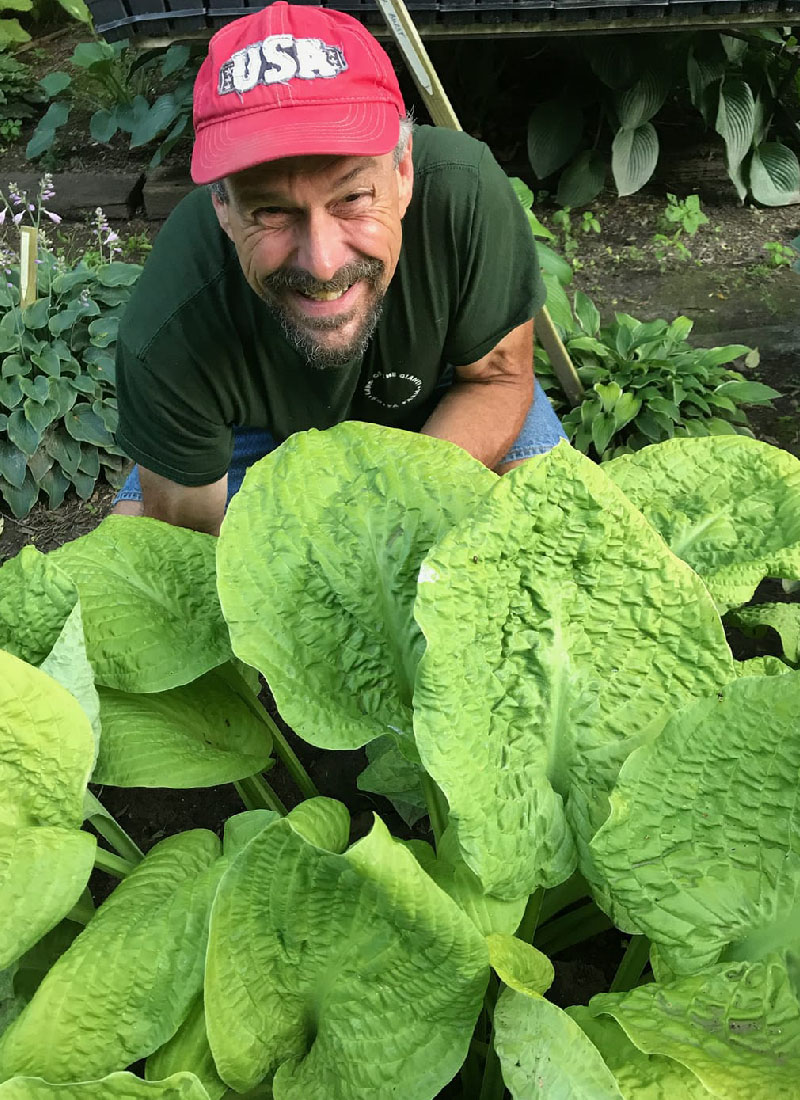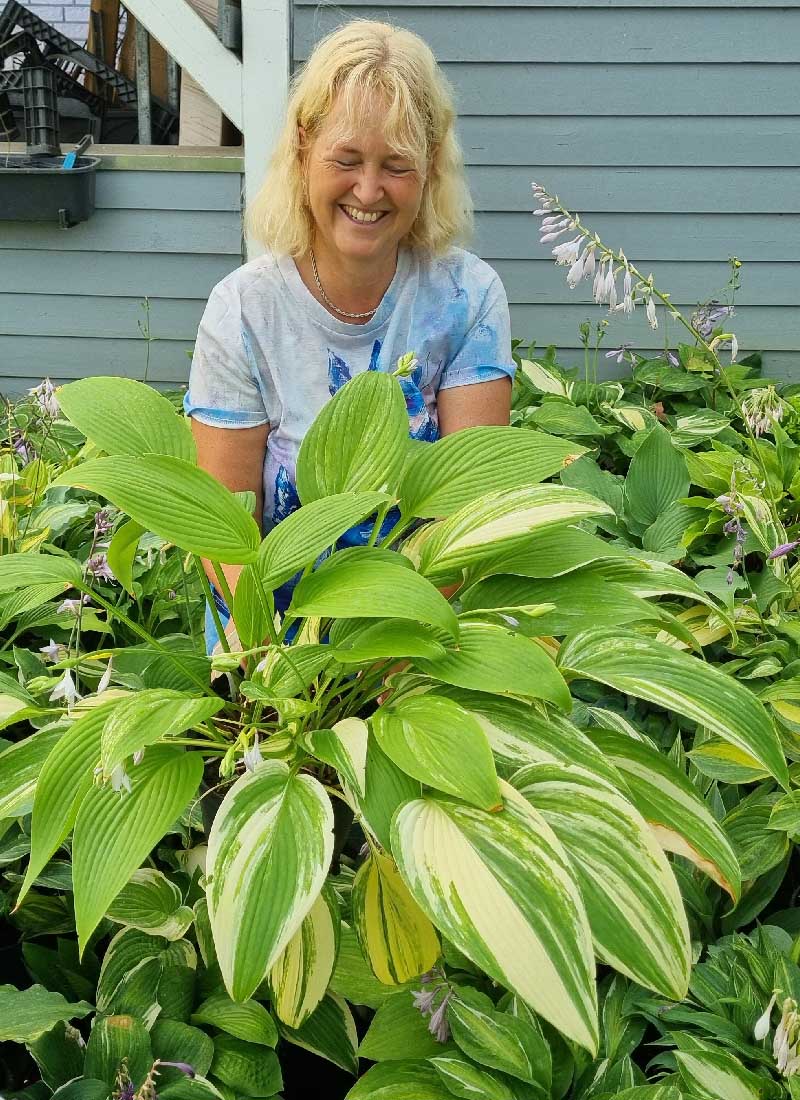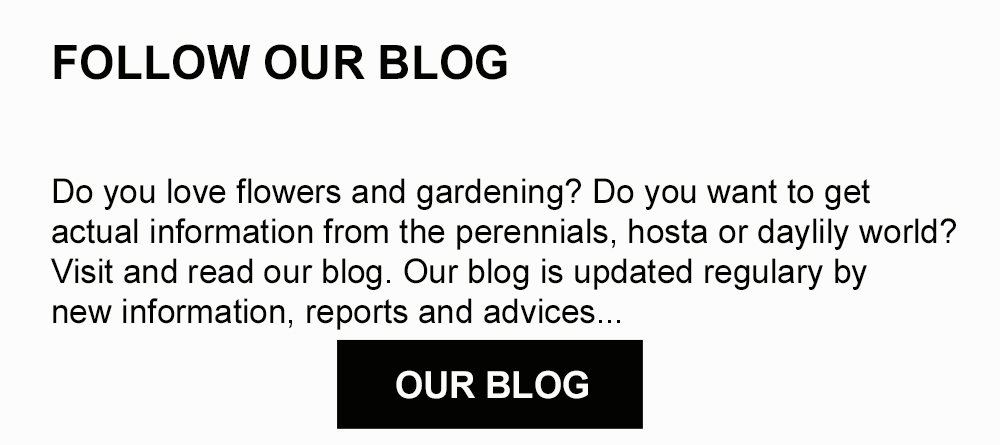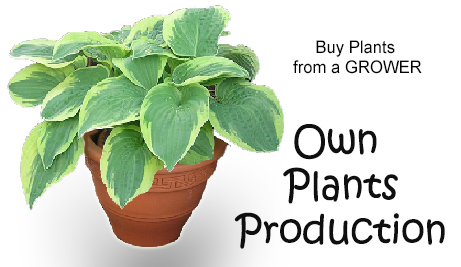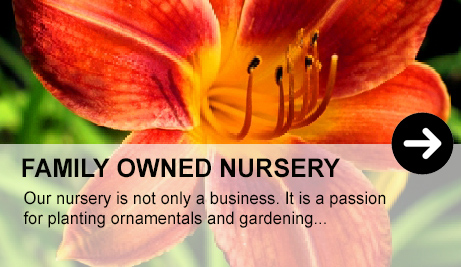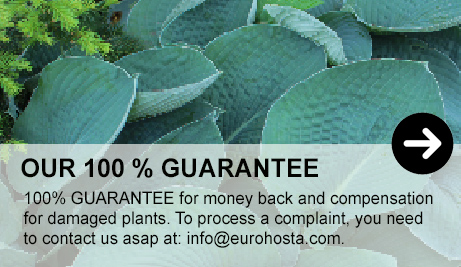Hosta Valley's Love Birds
- Plant Size:
- Small
- Flower Color:
- Lavender
- Product Code:
- H1406
- Supplied as:
- bare roots
Availability: In stock
If you walk through your garden full of hostas in the sunny spring day, you will notice one hosta that is the yellowest. You look at the tag and see it's called Valley's Love Birds... The canary yellow cultivar by J. Linneman has relatively long, narrow, pointed leaves with strongly wavy edges. The intense red petioles of the leaves are relatively short, so the plant forms a rather lower clump. Very compact and elegant in the spring. Definitely one of the most beautiful yellow cultivars on the market ever. It blooms with dark purple flowers in summer. If you are a fan of "Valley" hostas, definitely do not miss this cultivar. We definitely recommend it!
How to grow hostas
Save light shade to shade place in your garden to plant hostas. Filtered sun is best for the colorful varieties to reach their full color contrast. The green and blue hostas are the most shade-tolerant. Usually the yellow cultivars are the most sun-tolerant. The most dangerous is a direct sunshine, especially hot afternoon sun. This is the most critical where temperatures are high. Variegated varieties, especially those with a lot of white in the leaves, burn very easily. Blue color of leaves turns to green-blue or even fully green with too much direct sun. Plants with thick leaves are better suited for dry soil conditions than thin-leaved ones, but none is able to grow years-long in very dry soil. Plant hostas in moist, humus-rich soil. Water your hostas well immediately as you plant them. Give them water regularly during their first one or two growing season. Hostas grow slowly and may take 2 to 5 years to reach their full size, longer for the largest species and cultivars. Reserve a plenty of space in your perennial bed for hostas. Most of them are medium sized or large perennials. Hostas are almost fully disease and pest resistant. The most dangerous injury can by caused by slugs, snails and deers.
| Plant Size | Small |
|---|---|
| Spacing (h x w) | 20 x 30 cm |
| Leaf Size | 15 x 8 cm |
| Growth Rate | Fast |
| Leaf Color | Yellow |
| Leaf Color (Center) | No |
| Leaf Color (Margin) | No |
| Red "legs" | Yes |
| Slug Resistant | No |
| Sun Tolerant | No |
| Flower Color | Lavender |
| Wavy Leaf | Yes |
| Flower Fragrance | No |
| Sun Exposure | Partial Shade, Shade |
| Hybridized by | J. Linneman |
| Year of Registration | 2015 |
| Supplied as | bare roots |
| YT Video | No |
| Bohemia | No |
| Valley's | Yes |
| Hanjas | No |
| Asian | No |
| Giantland | No |
No video available.

